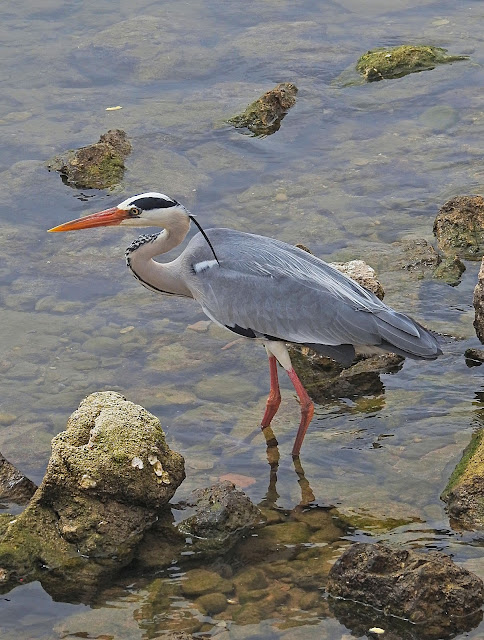The Little Egret is a small white heron with attractive white plumes on crest, back and chest, black legs and bill and yellow feet. It first appeared in the UK in significant numbers in 1989 and first bred in Dorset in 1996. Its arrival followed naturally from a range expansion into western and northern France in previous decades. It is now at home on numerous south coast sites, both as a breeding species and as a winter visitor.
With its yellow feet, which are used to flush prey when feeding in shallow water, the Little Egret is a distinctive member of the heron family.
Little Egrets first bred in Britain in 1996 and since then have successfully colonised much of southern Britain and Ireland. Most of the breeding colonies have been established within existing Grey Heron colonies, the two species nesting alongside one another.
The winter distribution is also currently restricted to the southern half of Britain & Ireland, despite the fact that young birds are known to move some distance from their natal site.
The plumage of the Little egret is normally entirely white, although there are dark forms with largely bluish-grey plumage. In the breeding season, the adult has two long plumes on the nape that form a crest. These plumes are about 150 mm (6 in) and are pointed and very narrow. There are similar feathers on the breast, but the barbs are more widely spread. There are also several elongated scapular feathers that have long loose barbs and may be 200 mm (8 in) long. During the winter the plumage is similar but the scapulars are shorter and more normal in appearance. The bill is long and slender and it and the lores are black. There is an area of greenish-grey bare skin at the base of the lower mandible and around the eye which has a yellow iris. The legs are black and the feet yellow. Juveniles are similar to non-breeding adults but have greenish-black legs and duller yellow feet, and may have a certain proportion of greyish or brownish feathers. The subspecies nigripes differs in having yellow skin between the bill and eye, and blackish feet. During the height of courtship, the lores turn red and the feet of the yellow-footed races turn red.
Little egrets are found in southern Europe, the Middle East, much of Africa, and southern Asia. Northern European populations are migratory and mostly travel to Africa although some remain in southern Europe, while some Asian populations migrate to the Philippines. The eastern subspecies is resident in Indonesia and New Guinea, while other populations inhabit Australia and New Zealand, but do not breed in the latter. Little egrets live in various habitats including the shores of lakes, rivers, canals, ponds, lagoons, marshes, and flooded land. These birds prefer open locations to dense cover. On the coast, they inhabit mangrove areas, swamps, mudflats, sandy beaches, estuaries, and reefs. Rice fields are an important habitat in Italy, and coastal and mangrove areas are important in Africa.
Little egrets are sociable birds and are often seen in small flocks. They are diurnal birds and feed mainly in the early morning and in the late afternoon. They use a variety of methods to procure their food; they stalk their prey in shallow water, often running with raised wings or shuffling their feet to disturb small fish, or may stand still and wait to ambush prey. Little egrets also make use of opportunities provided by cormorants disturbing fish or humans attracting fish by throwing bread into the water. On land, they walk or run while chasing their prey, feed on creatures disturbed by grazing livestock and ticks on the livestock, and even scavenge occasionally. Little egrets are silent birds in general, however, at their breeding colonies, they make various croaking and bubbling calls. When disturbed, they produce a harsh alarm call.
Population size
660,000-3.1Mln
Life Span
up to 22 years
Weight
350-550
goz
g oz
Length
55-65
cminch
cm inch
Wingspan
88-106
cminch





%2020.jpg)
%2021.jpg)

%20(Himantopus%20himantopus)%2019.jpg)
%20(Himantopus%20himantopus)%2020.jpg)
%20(Himantopus%20himantopus)%2021.jpg)
%20(Himantopus%20himantopus)%2023.jpg)
%20(Himantopus%20himantopus)%2026.jpg)

%2030.jpg)
%2031.jpg)
%2032.jpg)









%2021.jpg)
%2022.jpg)


